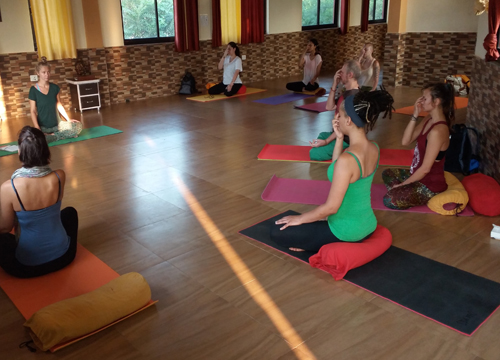Just as birds require both their wings to fly in the sky, similarly man needs both Jnaana (knowledge) and Karma (action without attachment to the fruits there of) to attain the highest goal of his life
Over the years Yoga has seen many faces; it has become more commercialized and modernized with changing times. Traditional yoga has lost its true meaning over these years and has been distorted and morphed, the purpose of this post is to make you aware of true yoga- The authentic, traditional Yoga.

Traditional Yoga comprises of Yamas, Niyamas, Asanas, Pranayamas, Mudras, Bandhas, and Dhyana (Meditation). Yoga in itself means a complete practice of all of the above; Traditional Yoga is dying out due to western influences, in the west yoga is seen as a means of physical fitness practiced on a rubber or synthetic mat comprising of asanas mostly. Traditional yoga is merely not asanas, it’s deeper than the postures practiced on the mat, Yoga means to become one with the self and to be one with your higher self, all the chakras of the body needs to be in balance which cannot happen just by practicing asanas or postures. The yamas, the niyamas, pranayamas, mudras, bandhas and calming the mind with meditation (dhyana) all come into play and that is what traditional yoga is all about.
The mere practice of asanas (postures) which happens today do give us physical fitness but for mental, emotional and spiritual fitness, yoga as a whole needs to be practiced.
Hatha yoga, Karma Yoga, Bhakti Yoga, Jnana Yoga and Raja Yoga are mainly the five main yogas originated in India. Yoga has spiritual roots and was practiced in the ancient times to deepen the connection with the inner self. Yoga was always preached by a teacher called Guru who has always been of prime importance in the ancient history of Yoga.
Traditional yoga immensely emphasizes the importance of Yamas and Niyamas which constitute the true meaning of authentic yoga and they are further broken down as follows:
YAMAS
1) Ahimsa (Non- Violence)
2) Satya (Truthfulness)
3) Asteya (Nonstealing)
4) Brahmacharya (Abstinence, walking into the divine)
5) Aparigraha (Nonpossessiveness)
NIYAMAS-
1) Shaucha (Cleanliness)
2) Santosha (Contentment)
3) Tapas (Austerity)
4) Swadhyaya (Self-study)
5) Ishvara pranidhana (Surrender to god)
In the truest of sense, yoga means to detach from the cycle of rebirth, to be liberated or to become Kaivalya.
At Kaivalya Yoga School we emphasize on complete and holistic practice and teaching of authentic and traditional yoga thereby passing the legacy of ancient yoga to the coming generations without any modification or distortion.